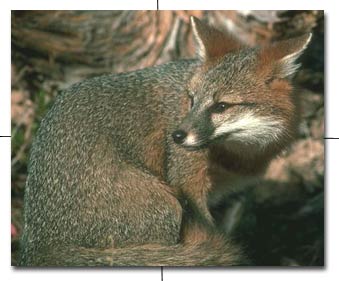

 |
 |
|
 |
||||||||||||||||||||||||
| Meaning of
name: Vulpes - fox velox - quick, swift |
Description:
The swift fox is the smallest of the North American wild dogs. An adult weighs 2 to 3 kilograms about half as much as the red fox. The pelage is mainly buffy grey above and orange-tan on the sides and legs. The throat, chest, underparts and the inside of the ears are creamy white. Black facial spots are found on each side of the muzzle below the eyes. The long (up to half the total body length) bushy tail is tan and tipped with black.
Remarks:
Historically the swift fox was found commonly on the dry prairies, but disappeared entirely from Canada in the early 1900s when hundreds were destroyed accidentally during predator control programs aimed at removing wolves, coyotes and ground squirrels from the prairies. Habitat loss due to agricultural, industrial and urban development also reduced their numbers. Reintroduction programs have established a small population of between 100 to 200 in the southern prairies of Alberta and Saskatchewan in a given year. Predation, (mostly by coyotes along with badgers, eagles, and bobcats) seems to be the principal cause of mortality in the swift fox population now.
Swift foxes live primarily in the shortgrass or mixed-grass prairie and desert. They hunt continually from dusk to dawn, covering great distances each night. They eat what they can catch, including small mammals, birds, reptiles, amphibians, fish, insects, grasses and berries. The swift fox has been clocked at 37 miles an hour, which is the speed of the fastest jackrabbit
Male swift foxes mature in thier first year while some females will not breed until their second year. Breeding probably occurs in March in Alberta. Gestation is 50 to 60 days with two to five pups are born in the den in mid-May. In the wild, the lifespan is three to six years. In captivity, up to 14 years.
© 2001 University of Alberta Museum of Zoology